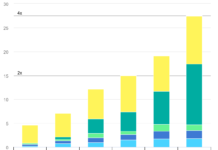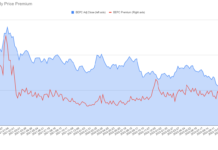by Beth Kelly
The digital era has enabled an “entrepreneurial explosion”, equipping ordinary people with the tools to invest in a myriad of early stage companies. Rather than investing millions of venture capital at once, interested individuals can use online platforms like Indiegogo and Kickstarter to invest smaller sums in projects they feel passionate about. Crowdfunding holds vast potential in the renewable energy sector in particular, opening up a world of opportunity for both investors and “green” project developers.
Now that renewable energy technology is becoming viable and cost-effective, firms in the industry are turning to crowdsourcing as a means of attracting capital. There are even a few platforms that cater exclusively to clean energy projects. Mosaic and Divvy are two crowdfunding endeavors that allow people to put their money into new renewable energy enterprises particularly those dealing with solar energy.
It’s perhaps not surprising that renewable and clean energy is seeing quite a bit of investment on these platforms. Many people are looking for ways to do their part to help the environment, and crowdfunding allows the little investor to participate in this communal undertaking. From the companies’ perspectives, this new model of raising money allows them to solicit investment for ideas that are risky and speculative, which may drive off more traditional institutions and private equity investors. It also allows them to finance small, local installations that may be too tiny to grab the attention of the rich and powerful.
There has been a growing awareness in recent years that clean energy goals aren’t likely to be achieved by a single, monolithic approach. Rather, multiple forms of energy production and distribution will probably have to come into play. Crowdfunding sites act as laboratories for innovation since many new ideas can be tried out without the lengthy and uncertain funding processes that have been used in the past.
Solar Roadways has plans to create roads that also act as solar panels. It achieved more than double its $1 million fundraising goal, setting a record on Indiegogo in the process. In the Netherlands, more than 6,000 shares in a wind turbine were sold by Windcentrale for €200 each. The organization thereby collected more than €1.3 million in funding in less than 13 hours.
In the United States, there are laws restricting some activities to accredited investors only. Despite the passage of the Jumpstart Our Business Startups Act of 2012, which aimed to make it easier for everyone to invest, there are still restrictions on the types of activity that are permitted with crowdfund investing. For example, Kickstarter and Indiegogo are prohibited from offering returns on investment, so they operate on a different model whereby those seeking funding instead offer gifts or perks to their investors instead of cash payouts.
Companies can get around most of these restrictions by offering bonds as a means of acquiring financing. Solar equipment installer SolarCity [SCTY] offers solar bonds with a 5 percent coupon rate, which compares favorably with CDs, muni bonds and other low-risk investments. This allows people to invest in solar energy without the risks and uncertainty inherent in backing an unknown or newer firm.
The benefits of crowdfunding aren’t restricted only to developed economies; in some ways, they may be even more important for countries without well-developed financial infrastructures. If many small investors get together to pool their resources, there will be less need for banks, venture capital funds and other financiers whose presence may be lacking in some third-world nations. The Kenya Climate Innovation Center has, in this year alone, assisted six new businesses that are seeking crowdfunded investments. This is the first such initiative in the East Africa region.
These examples aside, there are some drawbacks and problems with crowdfunding, to go along with an uncertain legislative climate in some jurisdictions. Some issues are inherent in the way crowdfunding works; for instance, startups that have the best marketing departments or concepts that sound cool but are impractical could reap the largest share of funding, leaving those with more staid and solid business prospects out in the cold.
Others are more structural, but ultimately represent bigger problems. For instance, sourcing funds from the crowd rather than from seasoned, expert investors can lead to inflated expectations of your company’s viability, since it’s more likely that no one will be vetting your business plan from a skeptical perspective. Even if a company becomes initially successful just from using crowdfunded capital, problems can arise when a network of experts then doesn’t exist to give good advice about business decisions that begin to arise at this stage, like when to take a company public.
Much as it has done for education and entertainment, the internet is causing a sea change in the world of investment (estimated to be around $65 billion at the end of 2014). People now have their choice of new renewable energy projects to get involved with. While crowdfunding still has a few challenges ahead and many wrinkles that need to be ironed out, investments in green tech already seem to be more widespread and democratic than those in most other industries.
Beth Kelly is a guest writer and blogger for AlbertaEnergyProviders.ca, where she tracks news and emerging trends in the clean energy sector. A graduate of DePaul University, she continues to live and work in Chicago, IL.








